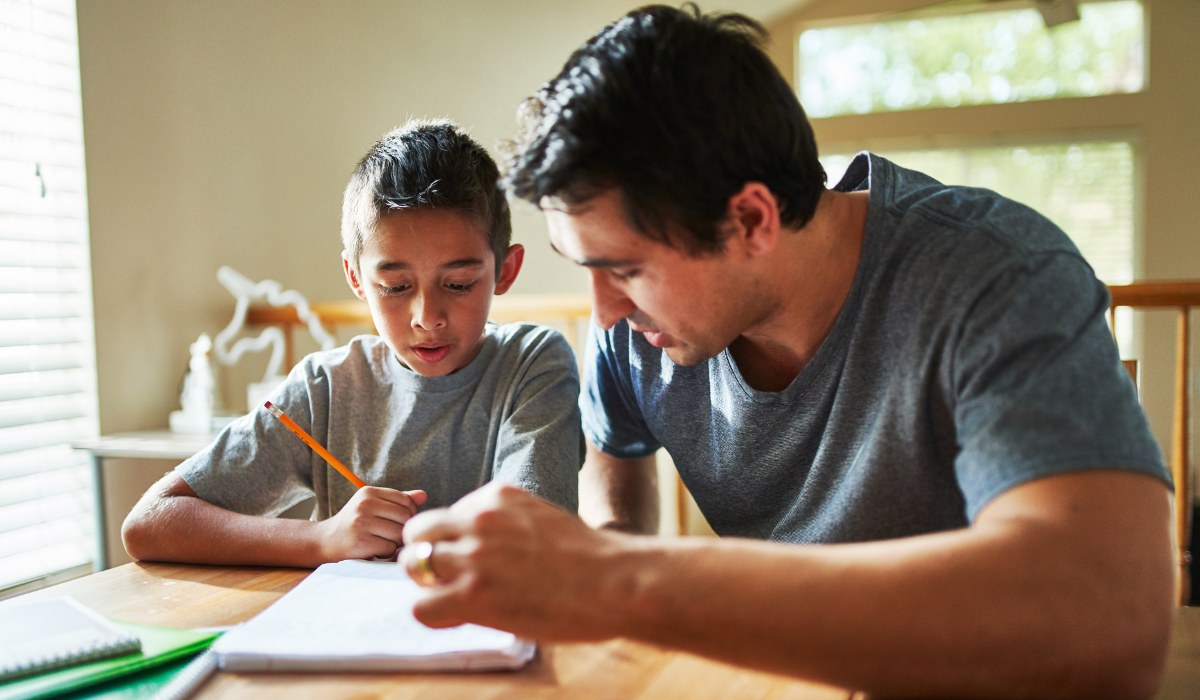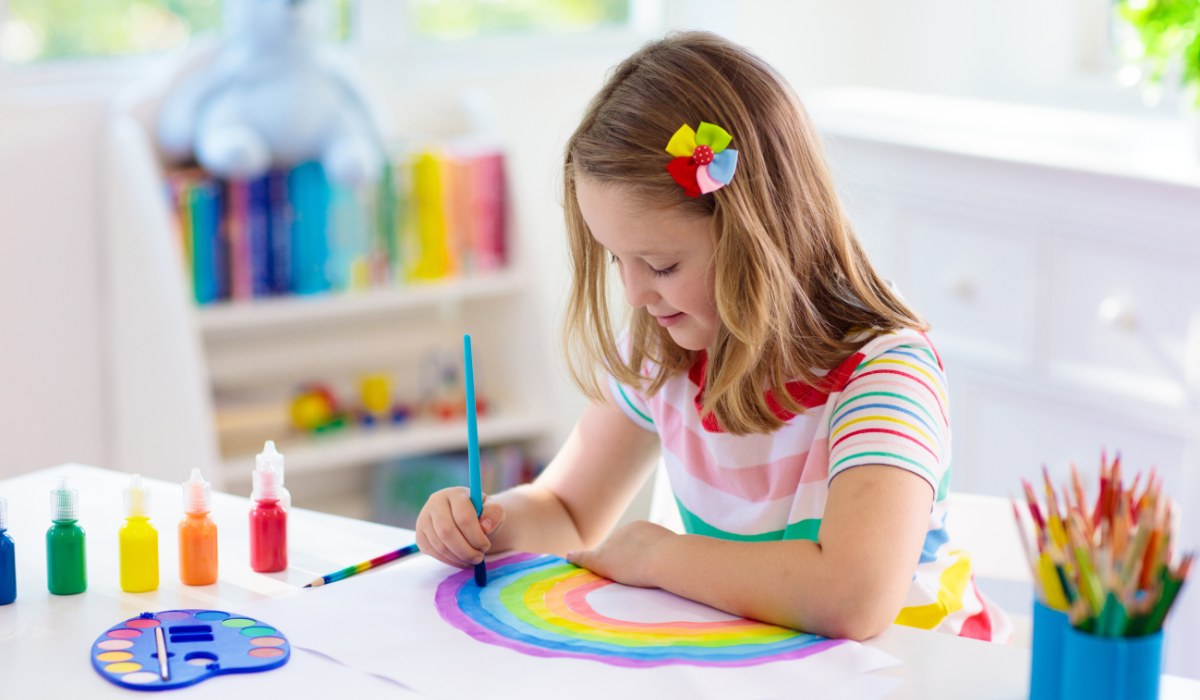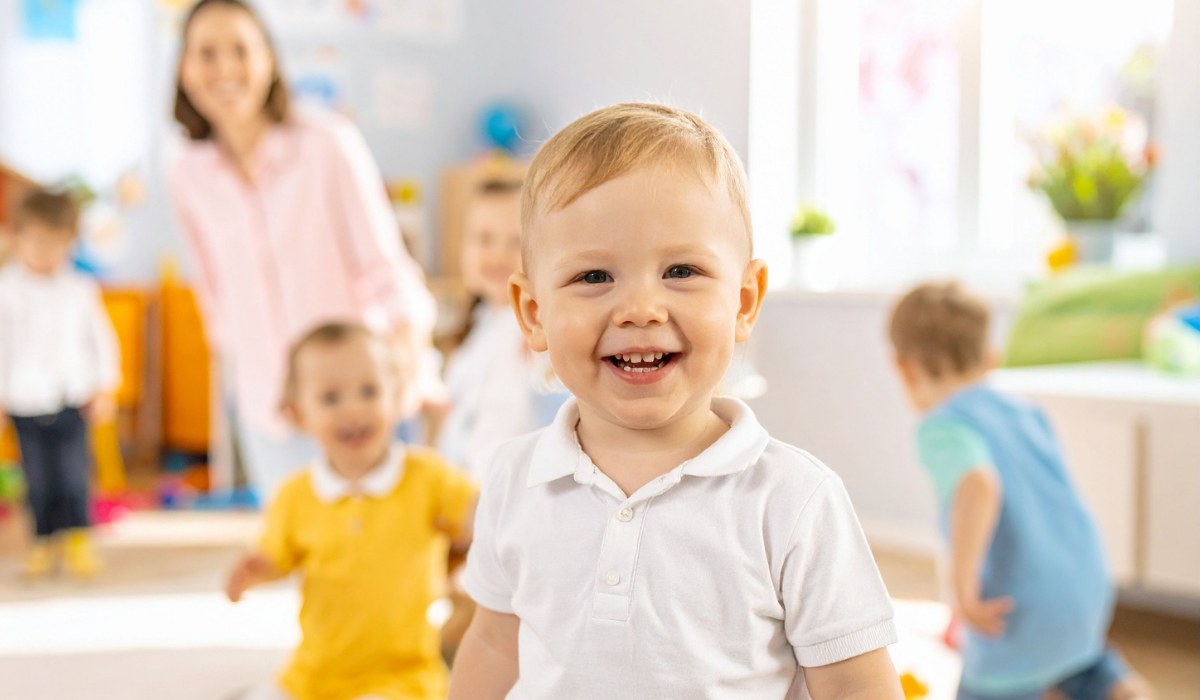Speech Delay vs. Autism
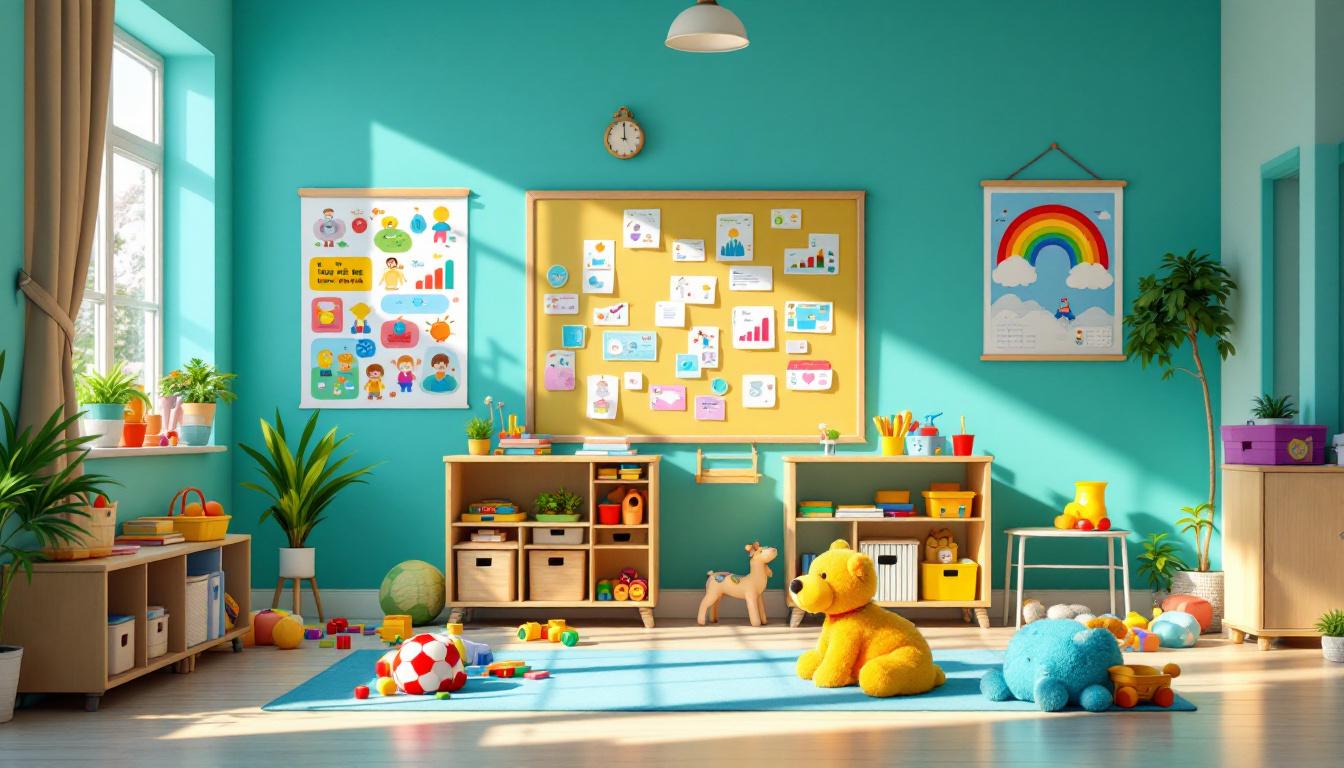
Deciphering Speech Challenges in Children: Delay or Spectrum Disorder?
Speech delays and autism spectrum disorder (ASD) are common developmental concerns among young children. Recognizing the distinctions between these conditions is crucial for early intervention and support. This article explores the differences and similarities in speech development, signs and symptoms, causes, diagnosis, and available support options, aiming to empower caregivers with knowledge to identify early signs and seek professional help.
Differentiating Speech Delay from Autism Spectrum Disorder
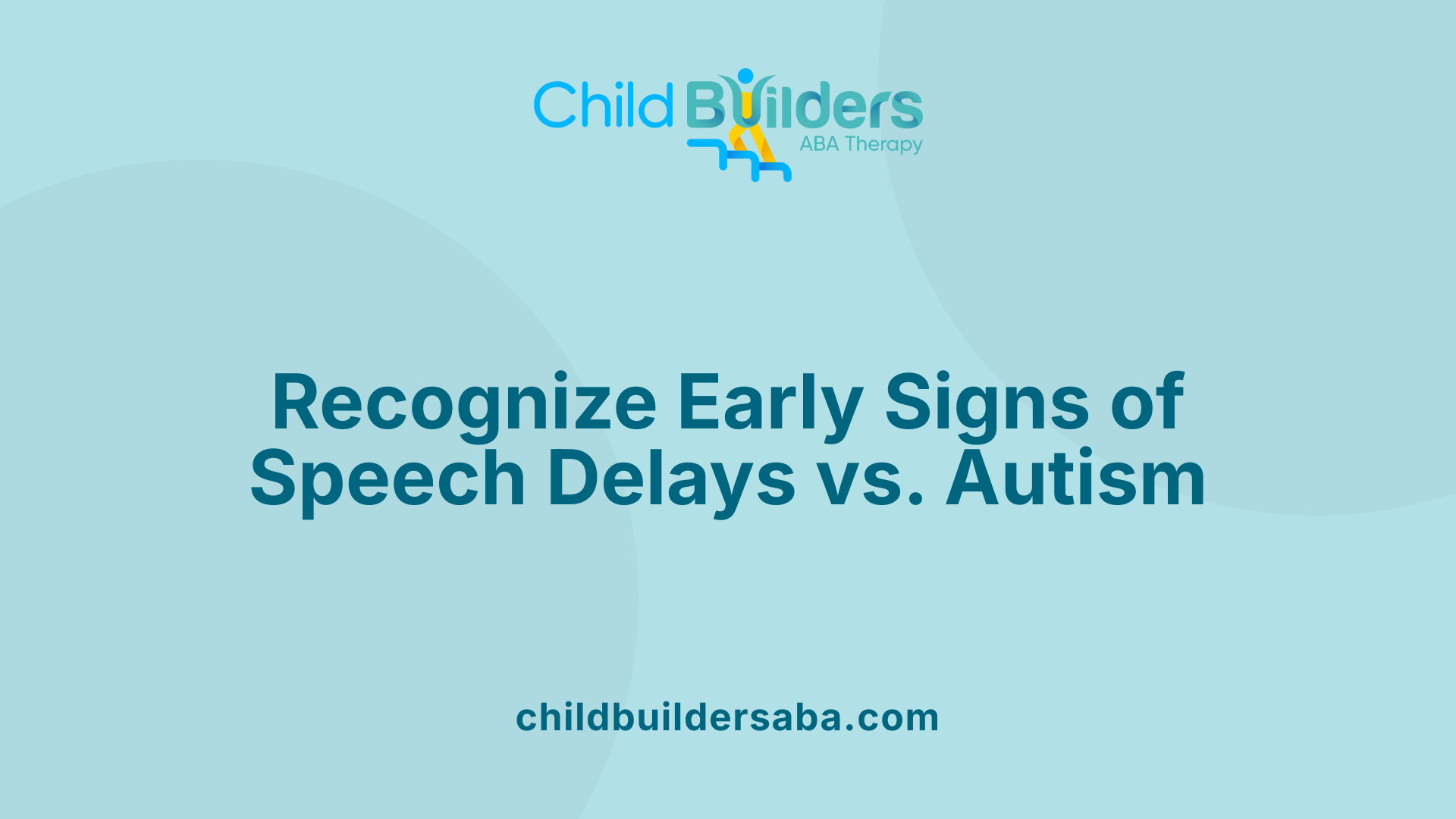
What is the difference between speech delay and autism spectrum disorder?
Speech delay occurs when a child's ability to produce speech sounds and meet language development milestones is slower than typical. For example, a child with speech delay might not start babbling by 12 months or may not begin combining words by 24 months. Despite these delays, children with speech delay are usually socially engaged, responsive to attention, and communicate effectively through gestures or body language.
In contrast, autism spectrum disorder (ASD) involves a broader range of developmental differences. Children with autism often face challenges in social communication, such as avoiding eye contact, not responding to their name, and having difficulty understanding non-verbal cues. They may also exhibit restricted and repetitive behaviors, sensory sensitivities, and limited interest in social interactions.
While speech delays are primarily about verbal skills, ASD affects multiple areas of development. Many children with autism begin speaking around age 3, but some may be non-verbal for years or use echolalia—repeating phrases—rather than spontaneous speech.
Characteristics of speech delay
- Slower progression of speech sounds and words.
- Meeting typical social milestones like making eye contact and responding to name.
- Using gestures like pointing, waving, or body language to communicate.
- Responding well to social cues and engaging in reciprocal interactions.
- Development of vocabulary around age 2 or later, often reaching about 50 words by that age.
Characteristics of autism spectrum disorder
- Difficulty with social interactions, such as avoiding eye contact or not recognizing social cues.
- Limited use of gestures or facial expressions.
- Repetitive behaviors like hand-flapping, lining up objects, or echolalia.
- Preferring solitude and having trouble engaging in shared activities.
- Challenges in understanding and following instructions, with some children never developing functional speech.
- Onset of speech around age 3 or later, with some remaining non-verbal.
How social and behavioral challenges differ
Children with speech delays tend to seek social interactions and respond positively when engaged. They often enjoy activities like hugging, playing games, and imitating others.
Children with autism may struggle with social engagement. They often show less interest in making eye contact, sharing attention, or imitating speech and gestures. Instead, they might prefer to explore objects or engage in repetitive activities, showing a preference for routines or solitary play.
Understanding these distinctions is crucial for early identification. While speech therapy can significantly help children with speech delay, children with autism often require comprehensive interventions, including behavioral therapy, social skills training, and support for sensory sensitivities.
How is diagnosis made?
Clinicians assess developmental milestones and observe behaviors across multiple areas. They look at speech and language patterns, social responses, and play behaviors. Standard tools like the Modified Checklist of Autism in Toddlers (M-CHAT) assist in early screening.
Early professional assessment—by pediatricians, speech-language pathologists, or developmental psychologists—is essential. Accurate diagnosis guides intervention plans that are tailored to the child's specific needs, helping optimize developmental outcomes.
Early Recognition and Professional Evaluation Timing
When should parents and caregivers raise concerns about speech delay or autism?
Concerns about speech and developmental delays should be raised as early as possible. Typically, if a child is not babbling by around 12 months or not responding to their name, it warrants a closer look. By 16 months, the absence of simple words or gestures such as pointing may signal a delay.
Monitoring developmental milestones helps determine when to seek expert advice. For instance, children usually begin producing consonant sounds, like 'da', between 4-6 months, and by 7-9 months, they may imitate sounds and follow simple commands.
If these milestones are not met, especially by the age of 12 months, parents should consult a pediatrician or a speech-language pathologist. This early assessment can help identify whether delays are typical or indicative of conditions like autism spectrum disorder.
What are some specific markers that should prompt assessment?
- Limited sound variation in babbling by 12 months
- Not responding to their name or social cues
- Absence of gestures such as pointing by 18 months
- Not using single words or phrases by 24 months
- Regression or loss of speech and social skills
Tools like the Modified Checklist of Autism in Toddlers (M-CHAT) are recommended around 18-24 months to screen for autism. However, professionals can evaluate signs even before these ages if parents notice concerning behaviors.
Why is early evaluation important?
Early diagnosis allows for timely intervention, which can include speech therapy, behavioral therapy, and other supportive measures. Starting these therapies early—often before age 2—has been shown to significantly improve communication skills, social interactions, and overall developmental progress.
In summary, parents should be proactive in discussing developmental concerns at well-child visits and seek assessment promptly if there are delays or atypical social behaviors. Early recognition, combined with professional guidance, can make a substantial difference in a child's developmental trajectory.
Developmental Milestones in Speech and Language
What are the developmental milestones for speech in children and how do they differ in speech delays and autism?
Children generally reach several key speech and language milestones in their early years. Between 4 to 6 months, most babies begin to babble, producing consonant sounds like 'da' or 'ba'. By around 12 months, they often understand roughly 50 words and should be able to use simple words like 'mama' or 'dada' meaningfully. Between 13 to 18 months, toddlers typically use about 5 to 10 words and start pointing during shared activities like reading.
In children with typical development, these milestones are achieved within expected age ranges, and they actively engage socially, respond to their name, and use gestures like waving or pointing.
However, children with speech delays may not exhibit typical progress. They might miss the babbling phase, have fewer than 50 words by two years old, and struggle to combine words into simple sentences. They could also have difficulty understanding instructions or pronouncing words correctly.
Autism spectrum disorder adds a layer of social communication challenges. Children with autism might experience delayed speech, but their issues go beyond that. They may not respond to their name, avoid eye contact, show minimal gestures, and have trouble understanding or using social cues. They often display repetitive behaviors, such as echolalia (repeating words or phrases), and may not develop a typical vocabulary timeline. Interestingly, some children on the spectrum begin forming words earlier than other children or remain non-verbal for years.
Differentiating a speech delay from autism involves observing social behaviors. Children with delays that are not related to autism tend to actively seek social interactions and respond positively to social engagement. In contrast, autistic children often show less interest in social exchanges, prefer solitude, and may not imitate behaviors like clapping or waving.
Early assessment by professionals can help distinguish between these conditions. Speech therapy and behavioral interventions can significantly improve communication skills, especially when initiated early. Understanding these developmental differences allows for tailored support to meet each child's unique needs.
Empowering Caregivers with Knowledge and Skills
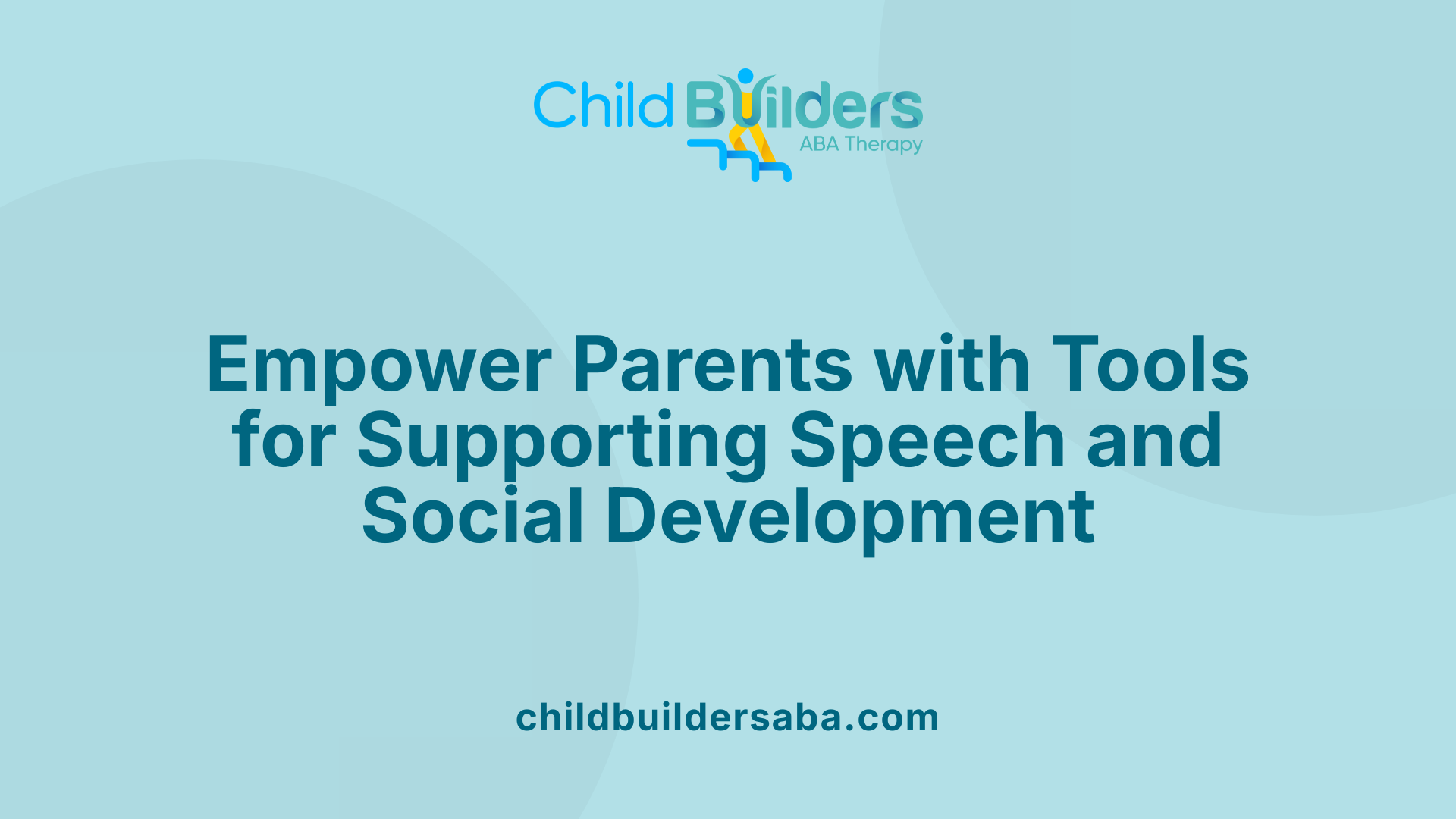
How can caregivers and parents be educated about speech development and autism?
Caregivers and parents play a crucial role in supporting their child's communication growth and recognizing early signs of autism. Effective education begins with providing accessible, evidence-based information about typical speech and language milestones, such as babbling by 12 months and a vocabulary of around 50 words by age two. Familiarity with developmental checklists and resources like the CDC milestones helps parents identify concerns early.
Training programs like the WHO Caregiver Skills Training (CST) offer practical strategies to promote language and social skills. These include techniques like 'respond and expand,' where caregivers model extended responses to their child's attempts at communication, and engaging in imitation and routine-based activities that foster interaction.
Regular consultation with healthcare professionals, including pediatricians and speech-language pathologists, enhances caregiver understanding. They can learn to observe signs of delays or autism—such as avoidance of eye contact, limited gestures, or lack of response to their name—and seek early intervention.
Supporting caregivers in creating a stimulating environment is also vital. Singing, gesturing, using visual aids, and engaging in play-based routines help develop speech and social skills tailored to the child's needs.
Furthermore, ongoing support through parent training sessions and access to resources—like assistive devices or telehealth services—empowers caregivers to confidently nurture their child's communication and social development.
What techniques are recommended for promoting speech and social skills?
Promoting speech and social skills involves interactive and consistent approaches. Techniques such as:
- Responsive communication: Respond promptly to attempts at communication, encouraging further interaction.
- Play-based learning: Use toys, games, and routines to stimulate language and social behaviors.
- Imitation: Model sounds, words, and gestures for the child to replicate.
- Visual supports: Incorporate pictures, gestures, and sign language to enhance understanding.
- Social routines: Create predictable activities that encourage joint attention and engagement.
Consistent use of these methods in daily routines helps children develop better speech and social skills, whether they are experiencing typical delays or autism-specific challenges. Early, targeted engagement makes a significant difference in their developmental trajectory.
Signs and Behavioral Indicators for Differentiation
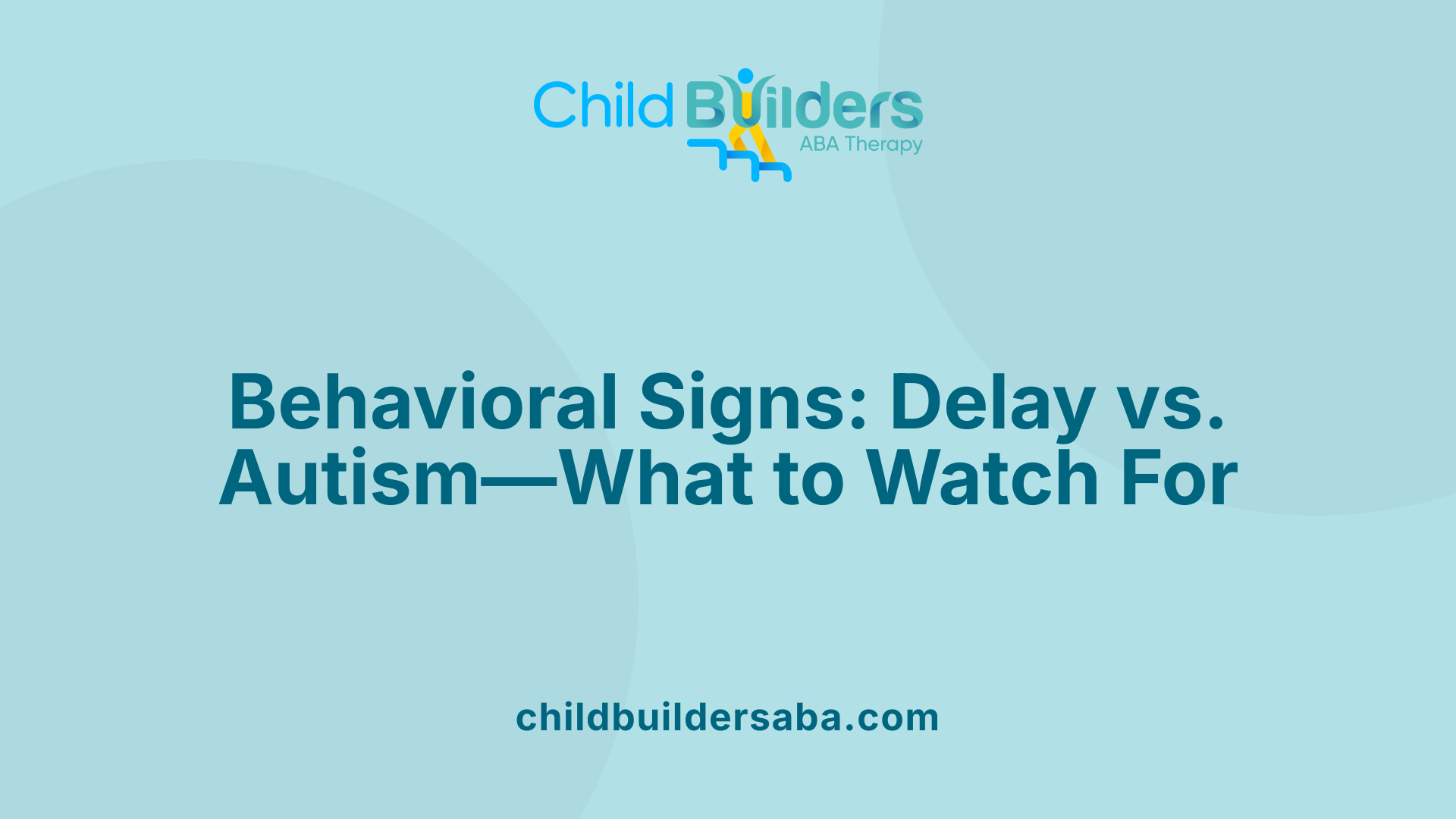
Speech signs in delays vs autism
Children with speech delays may show slower progress in speaking but often participate actively in social interactions. They might not meet the typical development milestones, such as babbling by 12 months or using two-word phrases by 24 months. These children usually respond well to social cues, engage in conversations, and use gestures like pointing or waving.
In contrast, children with autism often have a broader range of communication challenges. They may not respond to their name, stop babbling early, and show limited gestures by age 1. They might also produce repetitive phrases or echolalia and struggle with understanding or using words. Speech patterns can be stilted or robotic, and they may not develop a functional vocabulary by age 2-3.
Social and behavioral signs
Beyond speech, social cues are crucial in differentiating autism from speech delay. Children with autism often avoid eye contact, do not seek social interaction, and might show a preference for solitary activities. They can have difficulty with joint attention, such as sharing focus on an object or event.
Behaviorally, autistic children might exhibit repetitive behaviors like hand-flapping, lining up objects, or rocking. They may also display limited play routines and seem unresponsive to social excitement. Unlike children with speech delays who typically want to connect, children with autism may show indifference to social engagement or become overwhelmed.
What are the signs that differentiate speech delay from autism in children?
Signs that differentiate speech delay from autism include the pattern and presence of additional developmental behaviors. Speech delay typically involves children not meeting age-appropriate language milestones, minimal babbling, a lack of gestures, and difficulty understanding or combining words, but they usually do not exhibit significant social or behavioral challenges. In contrast, children with autism often experience regression of skills, reduced eye contact, limited response to their name, and repetitive or stereotyped behaviors, along with social interaction difficulties. Autism may also involve sensory sensitivities, unusual interests, and challenges with imitation, which are less common in speech delay alone.
Early screening with tools like the M-CHAT-R and professional evaluation are essential to accurately differentiate between the two. Recognizing these signs early can guide parents and caregivers toward appropriate interventions, ensuring better developmental outcomes for the child.
Assessing Speech Issues for Accurate Diagnosis
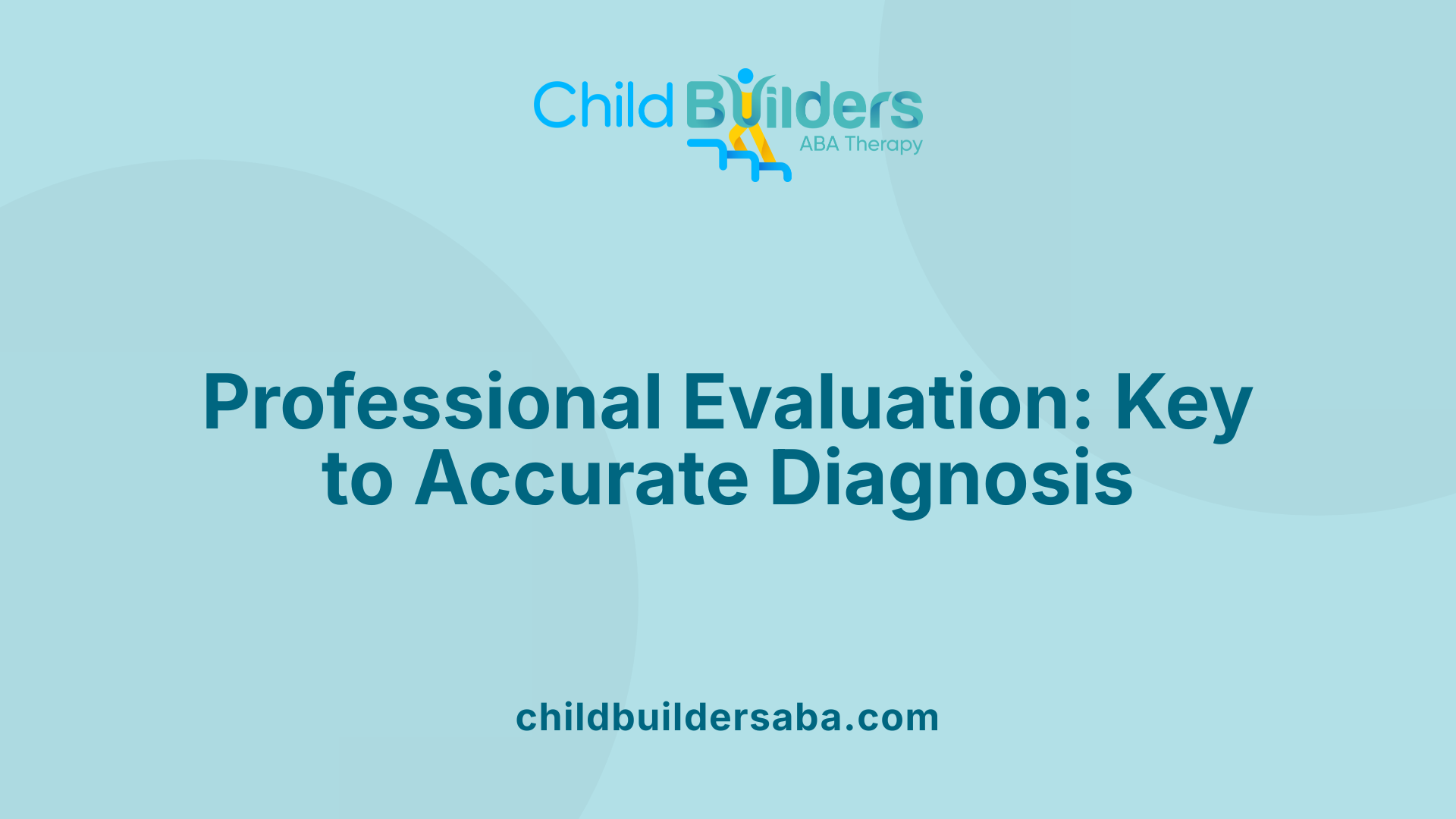
Observation of speech and social behaviors
When evaluating whether a child's speech delay is related to autism, look beyond just speech milestones. Children with autism often exhibit difficulty with social interactions. They might not respond to their name, avoid eye contact, or show limited use of gestures such as pointing or waving. Repetitive behaviors like lining up toys or hand-flapping are also common signs of autism.
Children with typical speech delays tend to still seek social engagement. They respond positively when spoken to, enjoy games like peekaboo, and initiate interactions with others, despite having difficulty articulating words. Noticing whether a child actively seeks social attention and responds to verbal cues can help differentiate delays related to autism from other speech issues.
Signs of autism include limited or absent response to social cues and a preference for solitary play. If a child exhibits these signs alongside delayed speech, it warrants further professional assessment.
Professional assessment methods
Early diagnosis is important. Pediatricians, speech-language pathologists, and psychologists employ various assessment tools to determine the underlying cause of speech delay.
One common screening tool is the Modified Checklist of Autism in Toddlers (M-CHAT), which helps identify children at risk for autism.
In a clinical setting, detailed evaluations include observing the child's communication skills, responses to social interactions, and development of gestures like pointing. Assessments also examine speech sound production, vocabulary size, and comprehension.
Speech-language pathologists may conduct formal tests measuring expressive and receptive language abilities, while also assessing non-verbal communication skills. Additional evaluations such as hearing tests or neurological assessments may be recommended based on initial findings.
Early evaluation typically occurs around 18 months to 2 years of age. A comprehensive assessment helps determine whether a child's speech delay is isolated or part of broader developmental conditions like autism, guiding interventions tailored to their needs.
Comprehensive Support and Intervention Strategies
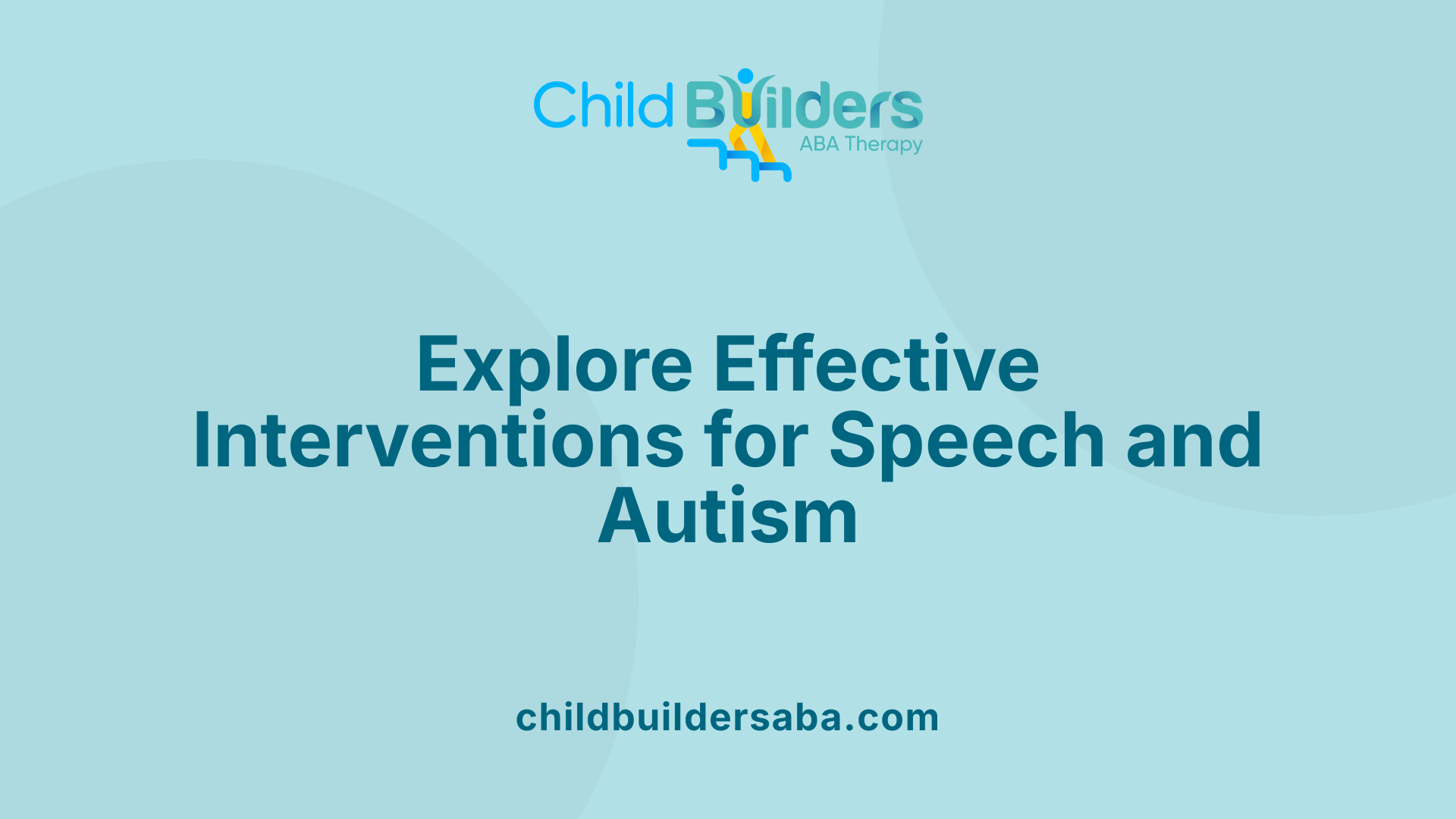 Support options and interventions for children with speech delay or autism are diverse and tailored to meet each child's unique needs. Speech-language therapy is a primary approach, helping to improve articulation, comprehension, and expressive language. Techniques include using augmentative and alternative communication (AAC) devices, engaging in structured speech exercises, and participating in social skills groups that promote interaction.
Support options and interventions for children with speech delay or autism are diverse and tailored to meet each child's unique needs. Speech-language therapy is a primary approach, helping to improve articulation, comprehension, and expressive language. Techniques include using augmentative and alternative communication (AAC) devices, engaging in structured speech exercises, and participating in social skills groups that promote interaction.
Behavioral strategies, especially Applied Behavior Analysis (ABA), are influential in both enhancing communication and reducing problematic behaviors. ABA involves structured routines and reinforcement techniques, often conducted in clinical or natural settings, to encourage positive behaviors.
Occupational and physical therapies complement speech interventions by supporting daily living skills, sensory processing, and motor development, which are often areas of difficulty for children on the autism spectrum. Educational frameworks like TEACCH focus on creating structured, predictable learning environments that foster independence.
Early intervention plays a crucial role in optimizing outcomes for both speech delay and autism. Parent training programs empower families with techniques to support their child's development at home.
Emerging technological aids are also making a difference, including social robots, virtual reality environments, and apps designed for language learning and social engagement. These tools can enhance motivation and social interaction, ultimately leading to better progress.
In summary, a combination of therapies, behavioral strategies, educational adaptations, and technological tools offers comprehensive support, enabling children with speech delay or autism to develop their communication skills and overall functioning.
Creating a Path Forward for Different Needs
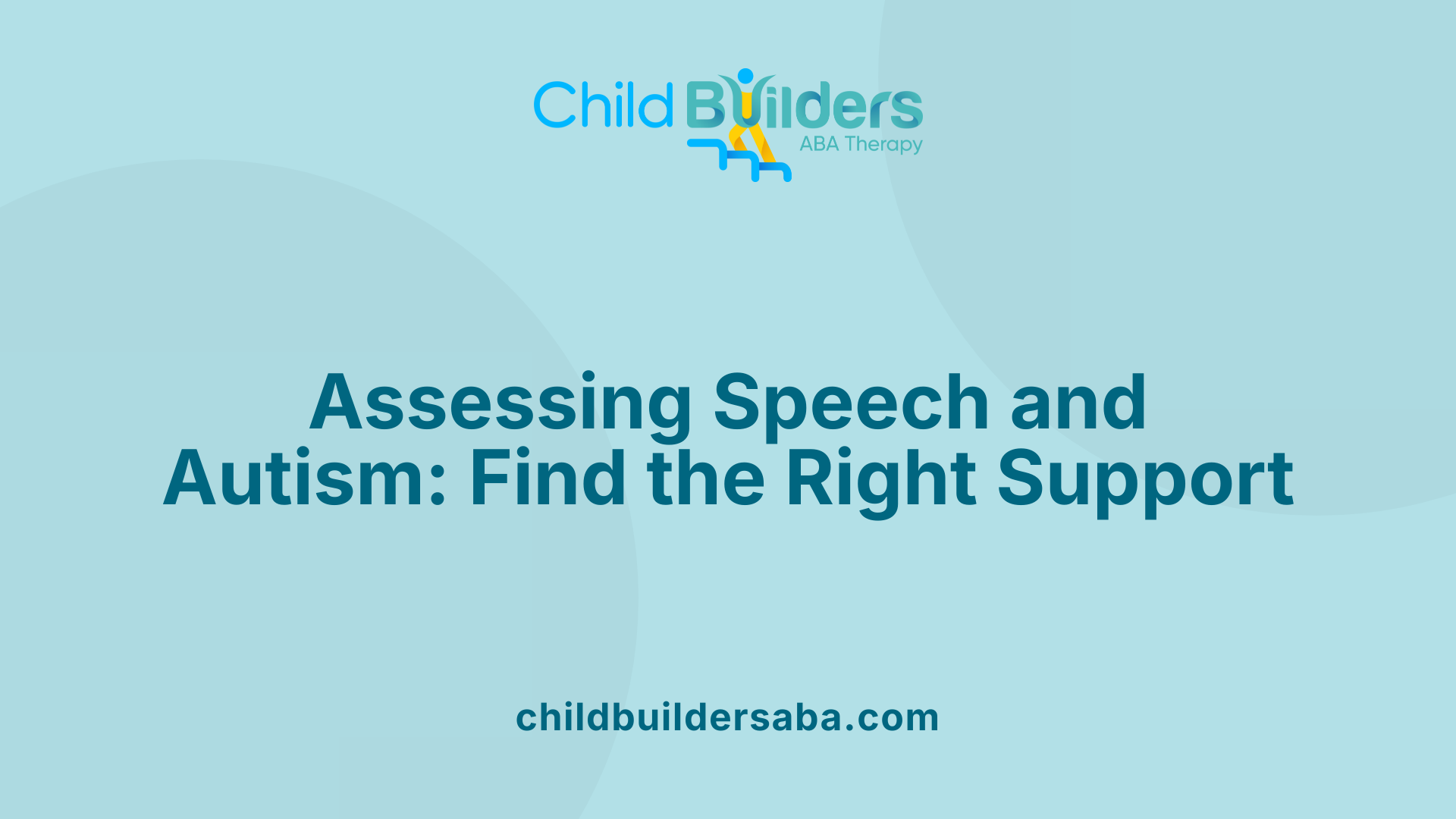
How do I assess whether a child's speech issues are due to delay or autism?
Assessing whether a child's speech problems stem from a delay or autism involves careful observation and professional evaluation. Children with a speech delay usually show motivation to communicate, using gestures, babbling, and responding to their name. In contrast, children with autism often display social communication challenges like avoiding eye contact, not responding to their name, and limited use of gestures. They might also engage in repetitive behaviors or have restricted interests.
Monitoring developmental milestones can be helpful. For example, children with delays may start forming words around age 2 or 3, while autistic children often follow a different pattern, sometimes starting to speak earlier or remaining non-verbal for years. An evaluation by health professionals such as pediatricians or speech-language pathologists can provide clarity. These assessments typically include observations, standardized tests, and reviews of the child's developmental history.
Early diagnosis is critical. It allows for targeted interventions tailored to the child's specific needs, whether that involves speech therapy for delays or behavioral therapies for autism. Understanding the child's social behaviors and communication cues helps guide the appropriate support and ensures they receive the best chance at developing their communication skills.
Tailored interventions
Interventions should be customized based on whether a child has a speech delay or autism. Speech therapy can significantly improve articulation, vocabulary, and social communication. For children with autism, combined approaches like behavioral therapies (e.g., ABA), social skills training, and speech therapy are often employed.
Importance of early intervention
The earlier the intervention, the better the outcomes. Early support can help children develop essential communication and social skills, reducing frustration and promoting better learning and interaction.
Role of multidisciplinary teams
Managing speech delays and autism typically involves a team of professionals, including pediatricians, speech therapists, psychologists, occupational therapists, and special educators. This collaboration ensures comprehensive care that addresses all aspects of a child's development.
| Aspect | Focus Area | Professional Involvement | Details |
|---|---|---|---|
| Assessment | Speech and Social Development | Pediatrician, Speech-Language Pathologist | Conducts evaluations, observes behavior, uses screening tools |
| Speech and Language Therapy | Communication Skills Improvement | Speech Therapist | Works on articulation, language comprehension, and use |
| Behavioral and Social Skills | Autism-specific challenges | Psychologist, Occupational Therapist | Addresses social interactions, repetitive behaviors |
| Family Support | At-home strategies and education | All team members | Guides parents on supporting development outside therapy |
Understanding these elements helps create an effective support system tailored to each child's unique developmental profile.
Summary and Next Steps in Supporting Your Child
Understanding the differences between speech delay and autism spectrum disorder is vital for implementing effective interventions and supporting your child's development. Early recognition of signs, timely professional assessment, and engaging in targeted therapies can significantly improve communication, social skills, and overall quality of life. Remember, each child's needs are unique, and a multidisciplinary approach ensures comprehensive support. Stay informed, collaborate with healthcare professionals, and nurture your child's growth with patience and encouragement.
References
- Speech Delay vs. Autism Spectrum Disorder: What's the Difference?
- The Difference Between Speech Delays and Autism - ECCM.org
- Speech Delay vs Autism: What's the Difference?
- 3 Signs That Your Child's Speech or Language Delay Could Be ...
- Speech Delay vs. Autism: Identifying the Differences - NAPA Center
- How to Tell the Difference Between Speech Delay & Autism | Apollo
- Speech delay vs. Autism: What's the Difference?
- Speech Delay and Autism: How to Tell the Difference - Expressable
- Speech Delay vs. Autism: What's the Difference - Forbrain



.jpg)
